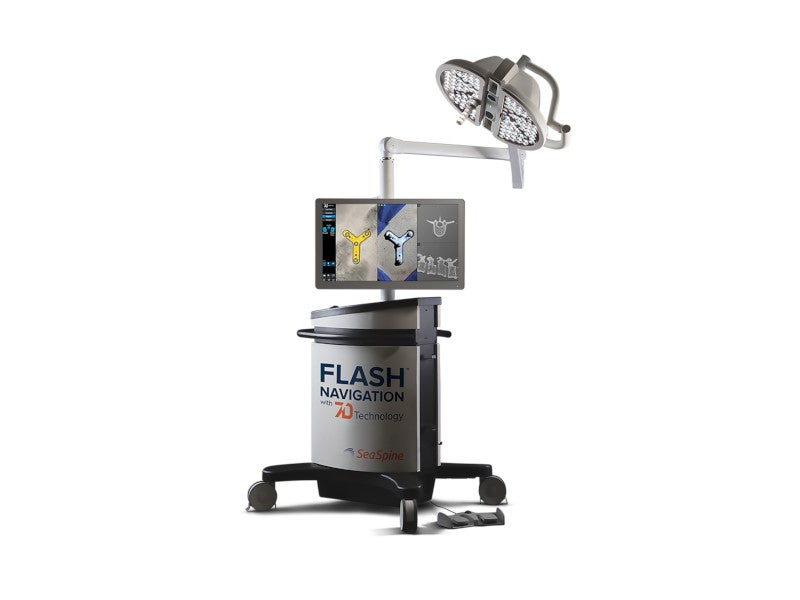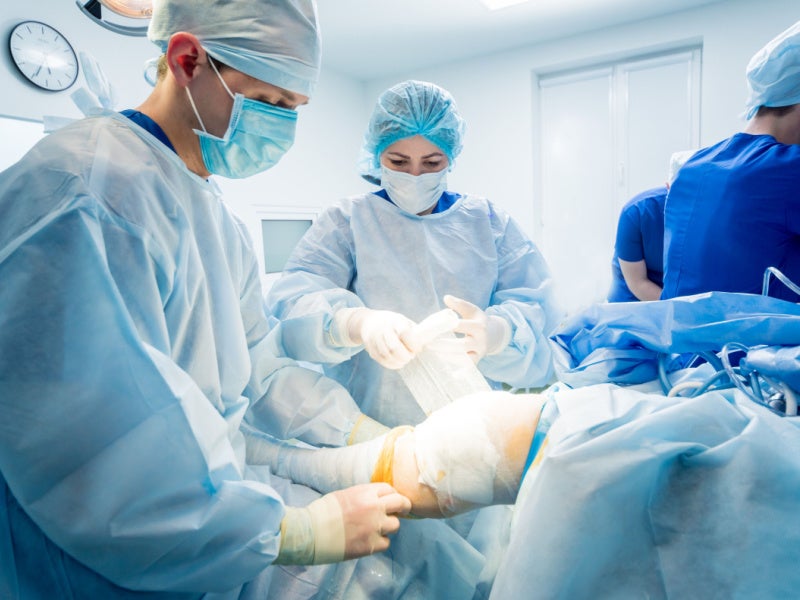Orthofix Medical, a medical device company based in the US, launched the 7D FLASH™ Navigation System Percutaneous module 2.0 in August 2023, revolutionising image-guided surgery.
The system is intended to serve the minimally invasive surgery (MIS) spine market, which is estimated to be valued at approximately $1.8bn in the US.
The FLASH™ Navigation platform integrates both open and percutaneous spinal modules, serving as an intraoperative image-guided system. Its primary purpose is to enhance surgical visibility, ensuring precise screw placement and offering a swift, efficient and cost-effective solution for surgical navigation.
The FLASH Percutaneous module is a significant addition to the FLASH Navigation platform, which specifically targets the minimally invasive spine surgery market. The module utilises camera-based technology and machine-vision algorithms, maintaining the rapid, accurate and efficient surgical workflow characteristic of the FLASH Navigation platform.
Orthofix’s 7D FLASH Navigation System design details
The FLASH™ Navigation System, powered by proprietary 7D Technology, utilises machine-vision technology for an easy, streamlined, minimally invasive procedural workflow. It enables a registration process to be completed in less than 30 seconds.
The FLASH Percutaneous platform employs specialised cameras and visible light for prompt analysis of the distinct reference array topography.
The platform constitutes the integrated surgical lighthead, tool tracking system, machine-vision cameras and FLASH projection system.
The optimised surgical light embedded with machine-vision technology eliminates the need for additional equipment and mitigates line-of-sight obstacles that can arise during surgery.
The embedded camera in overhead light forms the tool tracking system that recognises tracked instruments related to surgical anatomy.
Machine-vision cameras, coupled with sophisticated software algorithms, instantaneously recreate a 3D image for surgical navigation in a few seconds.
The FLASH projection system projects visible light onto the anatomy, generating a light pattern that reflects from the surface of the anatomy and comprises about one million data points, which are then utilised for surgical navigation. The process results in a comprehensive full-colour, 3D image reconstruction.
Orthofix’s 7D FLASH Navigation System features
The FLASH™ Fix feature of the system offers quick re-registration in less than 20 seconds, ensuring accuracy is maintained and confirmed during the procedure.
The proprietary FLASH™ Frame enables surgeons to confirm the precision of registration at various checkpoints, eliminating the need to include the reference post in the intraoperative dataset. It results in a streamlined procedural workflow.
The standout feature, FLASH™ Registration, achieves registration in less than half a minute, delivering a navigation-on-demand experience.
The FLASH Percutaneous module maintains imaging agnosticism, permitting surgeons and hospitals to use their preferred 3D intraoperative imaging system, resulting in no prerequisites for calibration or hardware linkage during the procedure.
Clinical studies of FLASH Navigation System
Studies have indicated that the FLASH™ Navigation System significantly reduces registration time by up to 95%, optimising workflow efficiency.
Benefits of Orthofix’s 7D FLASH Navigation System
The Flash™ Navigation System offers radiation-free, optimised navigation for minimally invasive surgery. It is a fast, efficient, imaging-agnostic and cost-effective solution, ensuring simple workflow and high accuracy with multiple landmarks for registration accuracy confirmation.
FLASH™ Percutaneous seamlessly integrates with SeaSpine® navigated instrumentation, contributing to the improvement of procedural workflows. The application of navigated array technology in conjunction with the Mariner® MIS posterior fixation system streamlines the execution of minimally invasive procedures.
The system also retains its open-platform nature, allowing surgeons to navigate alternative implant systems. The flexibility empowers surgeons to enhance their procedures without interrupting their established techniques.
The system integrates seamlessly with existing surgical workflows, with surgeon-controlled navigation facilitated through a foot pedal and sterile light handle. The overhead-embedded technology eliminates line-of-sight challenges, further enhancing the surgeon’s control.
Regardless of patient positioning or intraoperative movement, the FLASH™ Navigation System delivers segmental accuracy at every level. The feature ensures consistent precision throughout the procedure.










